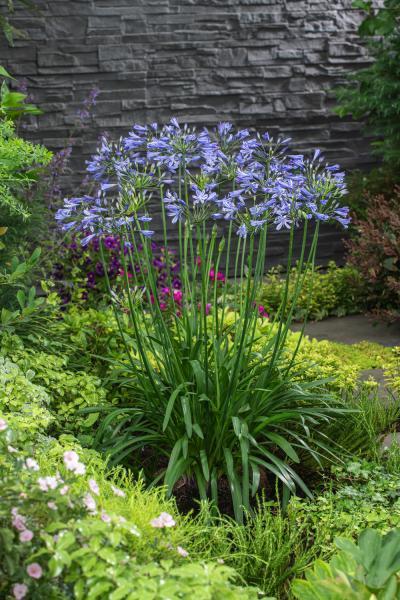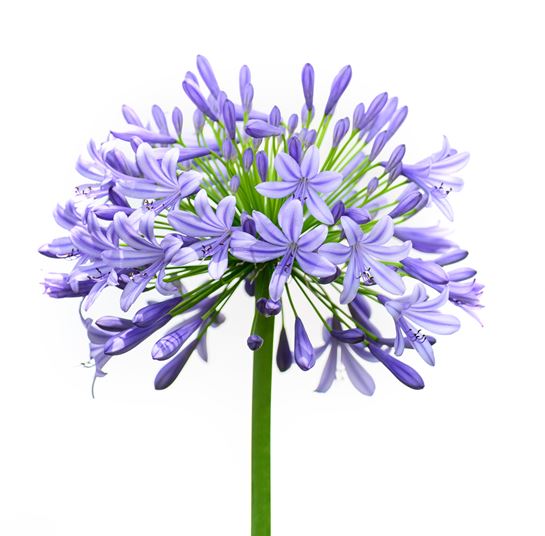Agapanthus Companion Plant Kingdoms: Perfect Pairings for Your Yard
Wiki Article
Unleashing the Secret to Effective Agapanthus Farming: Advice for a Flourishing Garden
In the realm of gardening, cultivating agapanthus effectively needs a tactical method that encompasses different elements of plant care. By understanding the subtleties of agapanthus cultivation, one can produce a setting where these plants flourish and bloom abundantly.Growing Agapanthus: Finest Practices
When planting Agapanthus, appropriate soil preparation is necessary for ensuring successful growth and advancement of these lovely flowers. Agapanthus, generally understood as Lily of the Nile or African lily, grows in well-draining soil with a somewhat acidic to neutral pH level - Agapanthus. Before planting, it is crucial to change heavy clay dirts with natural matter such as garden compost or peat moss to enhance drain and supply essential nutrients for the plantsTo plant Agapanthus, choose a place that obtains complete sunshine to partial shade, as this will certainly promote healthy and balanced growth and plentiful blooming. Dig a hole twice the diameter of the plant's root sphere and put the Agapanthus at the exact same deepness it was previously expanding. Delicately backfill the hole with dirt, pressing down firmly to remove any type of air pockets around the origins.
Water the recently planted Agapanthus completely and continue to keep the soil evenly damp, specifically during the plant's active growing season. Agapanthus. Applying a balanced plant food once a month can better support the plant's growth and flowering. By following these ideal practices for planting Agapanthus, you can create a sensational display screen of these captivating flowers in your yard
Perfect Soil Conditions for Agapanthus
For ideal growth and growing success of Agapanthus plants, making certain the soil conditions are perfect is essential. Agapanthus prefers soil that is rich in nutrients, so including a balanced plant food throughout the growing period can advertise healthy development and vibrant blooms.
Watering and Fertilizing Tips
To guarantee healthy and balanced growth and vibrant blooms, proper watering and fertilizing techniques are important for effective Agapanthus farming. Agapanthus plants gain from regular watering, specifically during the expanding period. It is advised to water deeply as soon as a week, guaranteeing the soil is damp however not waterlogged. Throughout heat or in pots, even more frequent watering might be required to avoid the dirt from drying entirely.When it concerns fertilizing Agapanthus, a well balanced plant food with equal components nitrogen, phosphorus, and potassium can be applied in the spring to advertise healthy and balanced development and flowering. Slow-release fertilizers are ideal for offering nutrients progressively over an extensive duration. Avoid over-fertilizing, as this can lead to too much vegetation growth at the cost of blossoms.
Furthermore, incorporating organic matter like garden compost into the dirt can enhance nutrient levels and improve dirt structure, assisting in the general health of the Agapanthus plants. By adhering to these watering and feeding suggestions, garden enthusiasts can guarantee their Agapanthus plants flourish and generate sensational display screens of blossoms.
Trimming and Deadheading Techniques
Appropriate pruning and deadheading techniques play an essential duty in maintaining the wellness and aesthetics of Agapanthus plants, matching the crucial methods of watering and feeding for successful growing. Trimming Agapanthus involves eliminating invested blossom heads, dead or yellowing leaves, and general shaping of the plant to promote far better growth. Deadheading, the procedure of getting rid of discolored blossoms, not only improves the plant's look yet likewise urges additional flowering.When deadheading Agapanthus, it is suggested to snip off the blossom stem at the base making use of sharp, clean shears. This procedure reroutes the plant's power from seed production back right into origin and foliage development, advertising a healthier and a lot more robust plant. Routine deadheading can prolong the flowering duration of Agapanthus and protect against self-seeding, which can lead to overcrowding.
In regards to trimming, Agapanthus generally benefits from a light trim after flowering to clean up the plant and urge fresh development. Reducing back the invested blossom stems and getting rid of any damaged or dead vegetation assists preserve the plant's vigor and total appearance. Nevertheless, it is necessary to prevent cutting into the crown of the plant, as this can compromise its health and wellness.

Protecting Agapanthus From Pests and Diseases
Executing effective insect and condition monitoring methods is important to safeguarding the wellness and vigor of Agapanthus plants in farming. Agapanthus are usually durable plants, but they can still come down with various parasites and conditions if not correctly taken care of. One typical pest that influences Agapanthus is the Agapanthus borer, a caterpillar that tunnels right into the plant, causing damages to the leaves and flowers. click to read more To avoid problems, routine inspection of the plants is necessary. If borers are discovered, they can be by hand eliminated, or insecticidal soap can be utilized as a control measure.In enhancement to parasites, Agapanthus are vulnerable to conditions such as root rot and fungal leaf places. These issues can typically be avoided by ensuring appropriate drain and preventing overwatering. Impacted parts of the plant ought to be quickly eliminated to protect against additional spread if indicators of illness show up. Fungicides may likewise be made use of as a therapy action, adhering to the manufacturer's instructions thoroughly. By remaining alert and imp source addressing insect and illness problems immediately, garden enthusiasts can assist their Agapanthus flourish and thrive.

Conclusion
To conclude, successful growing of agapanthus calls for proper growing strategies, optimal dirt conditions, adequate watering and fertilizing, normal pruning and deadheading, and security from illness and parasites. By following these methods and suggestions, garden enthusiasts can ensure a growing yard loaded with lovely agapanthus blooms. Agapanthus. Bear in mind to preserve consistent treatment and focus to detail to promote the health and wellness and long life of these stunning plantsWhen planting Agapanthus, appropriate soil prep work is essential for making sure successful development and development of these attractive flowers.Water the newly planted Agapanthus thoroughly and continue to keep the dirt uniformly damp, particularly throughout the plant's energetic growing season.For optimal growth and flowering success of Agapanthus plants, making certain the soil conditions are optimal is vital. When transplanting or planting Agapanthus, ensure the soil is well-prepared to give the essential structure for the plants web to establish themselves successfully. One common pest that affects Agapanthus is the Agapanthus borer, a caterpillar that tunnels into the plant, triggering damages to the fallen leaves and flowers.
Report this wiki page